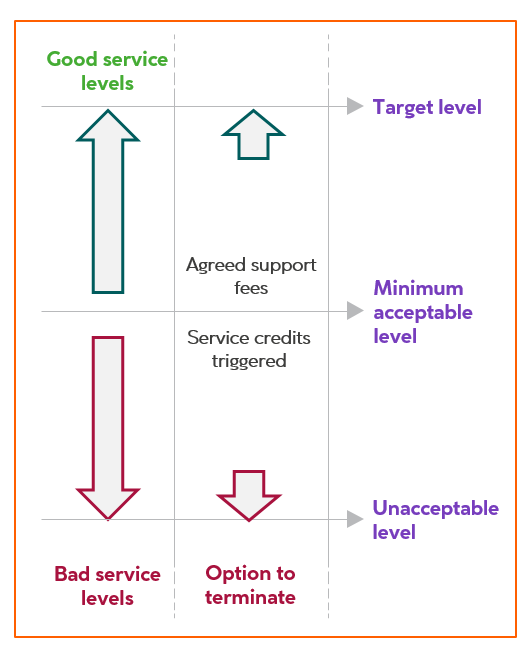Service level agreement
A Service Level Agreement (SLA) records a common understanding about services, priorities, responsibilities, guarantees and warranties between parties where one party is the customer and the other is the service provider.
An SLA will need to cover support services, hours and fees, and service levels and credits. It is very common with the provision of software.
Service levels
It is important that both parties are clear exactly what services are being provided and how they are to be measured.
Issues to consider include:
- severity of impact on the business resulting from a fault in the service
- the tool to measure availability and how often the measurements are taken to minimise the potential for disputes
- if the SLA is to have a term of years, it would be desirable for the parties to include rules about how performance standards will improve over time.
Service hours
The hours during which support is to be provided will vary depending on the service. For software (from a customer’s perspective) it is important the level of support received is commensurate with the use and deemed importance of the software being used.
Support fees
This is the fee to be paid to the supplier for providing the services.
Service credits
This is the mechanism by which the customer is compensated for economic loss as a result of the drop in performance and which motivates the supplier to rectify poor service delivery.
The timing of when service credits are triggered will vary, but they should apply only in situations where the performance was inadequate and below an acceptable range of supplier performance.
Termination
Invariably a supplier will be keen to ensure that service credits represent the only remedy available to a customer for breach of service levels. However (from a customer’s perspective) there is a limit to how useful service credits are and eventually there comes a point where if service levels drop below a certain level, such service levels are unacceptable. In this situation the ability to terminate is likely to be the most sensible recourse.

Talk to us about
Related services





 Download PDF
Download PDF
